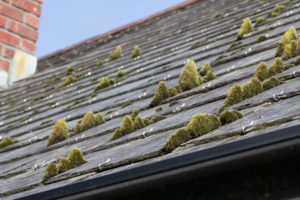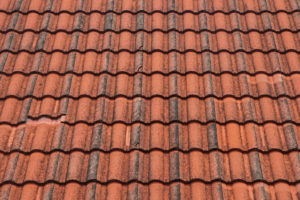Your roof is an essential part of your property. From providing protection from the elements to contributing pretty heavily to your building’s overall property value, your home’s top is important for more reasons than one. Naturally, staying informed about the myriad of different harmful substances that can compromise the health of a home’s roof is recommended for those looking to maintain a safe and valuable property.
That being said, algae and mold are two of the most common substances that can jeopardize the state of your roofing. And while the two may look similar in appearance, their effects and the causes of their growth are entirely unique to them. Read on for a brief rundown of what you can expect from these two troublesome contaminants and diagnose your roof’s issues seamlessly and effectively.
 Algae
Algae
If you’re roofing is made of asphalt materials such as shingles, algae is a scourge you’d do well to keep an eye out for. Due to its notorious knack for spreading through air-borne spores, it’s a substance that needs to be treated and removed quickly before it has the ability to become a much more costly repair.
While algae is surely an ugly guest to be hosting on your roof, the pollutant doesn’t break down your fixture like other more voracious materials. If, however, you notice black streaks and green growths on your home’s exterior, you may want to invest in a quick algae removal service and nip the problem in the bud while it’s still manageable.
 Mold
Mold
Though similar in appearance, mold is an entirely different beast altogether when comparing it to the previously mentioned algae. Unlike its green counterpart, mold can cause both aesthetic and extensive structural damage to the state of your roof and home. Mold proliferates in damp and poorly ventilated areas like attics and basements and doesn’t waste its initiative there. If left to its own devices, the harmful substance can quickly spread to your roof, deck, and even siding.
Unlike algae, mold can also bring with it scores of health conditions such as lung infections, eye and nose irritation, and even asthma. Needless to say, if you find your home overrun by this less than pleasing material, you owe it to yourself, your home, and your guests to have it quickly treated so as to avoid these health and structural issues.
Conclusion
While preventative measures such as zinc strips are surely helpful for hindering the spread of growths like algae and mold, they won’t do you much good if you live in an especially humid area. Fortunately, pressure washing remains a tried and true method of tackling these disgusting organisms and keeping your home looking clean and pristine! If you have reason to believe your home is being struck with either of these harmful growths, keep what we mentioned in mind and diagnose the issue before it has a chance to grow worse.
Leave a Reply